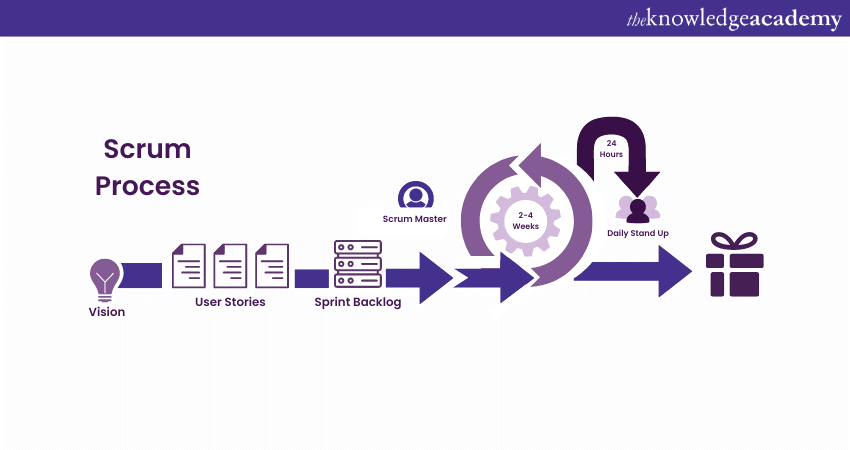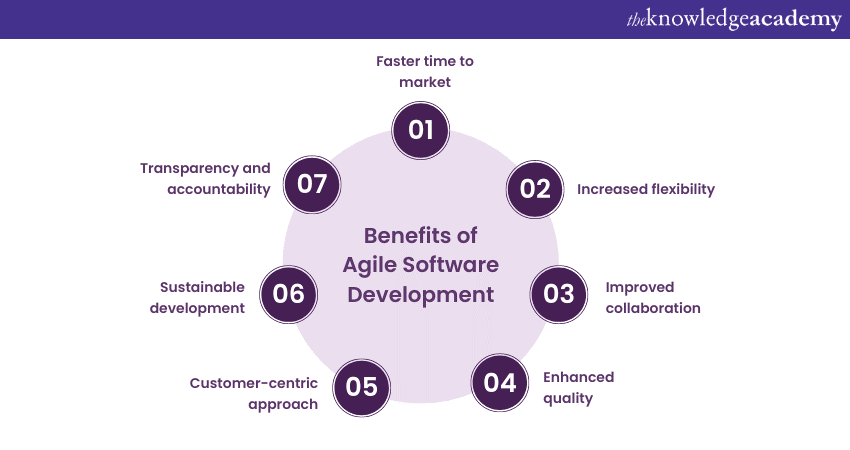We may not have the course you’re looking for. If you enquire or give us a call on 01344203999 and speak to our training experts, we may still be able to help with your training requirements.
We ensure quality, budget-alignment, and timely delivery by our expert instructors.

“Agile” defines the ability to think and act according to the changing environment. An Agile person is flexible, works well with others, and quickly adapts to change. When a business is elegant, it quickly adapts to change, meets customer needs, and works more efficiently in a fast-paced market. So, What is Agile Software Development? Well, in a nutshell, it embraces the change that can bring more efficiency to an organisation.
Developers use an Agile approach for a new app, releasing early versions and adjusting quickly to meet customer needs. When an organisation uses this approach, it can always change its final product according to consumer needs. In this blog, we will understand What is Agile Software Development and how can we use it to improve the management approach towards the work environment.
Table of Contents
1) Definition of Agile Software Development
2) Core Principles of Agile Software Development
3) Agile Methodologies
4) Benefits of Agile Software Development
5) Challenges and Drawbacks
6) Conclusion
Definition of Agile Software Development
Agile Software Development is a modern approach to Software Engineering that emphasises flexibility, collaboration, and adaptability. Unlike traditional methodologies that often follow a rigid, sequential process, Agile operates in short, iterative sprint cycles.
Imagine developing a new software product; instead of spending months or even years on planning and development, Agile teams work in small increments, typically 2 to 4 weeks long. These increments result in functional software that can be tested and improved upon.
Collaboration is the key to the Agile process, involving developers, testers, designers, customers, and stakeholders. Regular communication ensures alignment with the project goals and allows for quick adjustments if necessary. In Agile, change isn't a problem; it's a chance to do better. The team quickly adjusts if something changes because of new market trends or customer ideas, ensuring the final product is what users need and like right now.
By focusing on iterative development, continuous feedback, and a customer-centric approach, Agile Software Development offers a more responsive and efficient way to manage software projects. It promotes a culture of transparency, continuous improvement, and adaptability, making it particularly suitable for today's fast-paced and ever-changing technology landscape. If you're preparing for a job interview in an Agile environment, reviewing Agile Interview Questions can help you gain valuable insights and prepare for key concepts.
According to a case study by Mike Ferrara, and Brain Wodarski, Guidehouse adopted the Scaled Agile Framework, utilising a shared program roadmap and vision. This approach promoted transparency and collaboration among the delivery teams, business owners, and stakeholders.
Core Principles of Agile Software Development
Agile Software Development is a philosophy guided by core values and principles. These underlying beliefs form the foundation for Agile methodologies, shaping how projects are managed and executed.
The Agile Manifesto
The Agile Manifesto was created by seventeen software developers in 2001 to outline the fundamental values of Agile Methodologies. The manifesto includes four key values:
1) Interactions over processes and tools: Emphasising personal collaboration and communication rather than relying solely on rigid processes and tools.
2) Working software over comprehensive documentation: Prioritising the development of functional software over extensive documentation, which might become obsolete quickly.
3) Customer collaboration over contract negotiation: Promoting a collaborative relationship with the customer rather than adhering strictly to contractual agreements.
4) Responding to change over following a plan: Recognising that change is inevitable and valuing adaptability and responsiveness over strict adherence to an initial plan.
The 12 Principles
In addition to the four fundamental values, the Agile Manifesto also includes 12 guiding principles, further elucidating the philosophy of Agile Software Development:
1) Customer satisfaction: Delivering valuable software early and continuously to satisfy the customer.
2) Embrace change: it is essential to welcome changing requirements, even late in development.
3) Frequent delivery: Releasing working software frequently, with a preference for a shorter timescale.
4) Collaboration: Business people and developers must work together daily.
5) Motivated individuals: Build projects around motivated individuals, providing support and trust.
6) Face-to-face communication: The most effective method of conveying information.
7) Working software: The primary measure of progress.
8) Sustainable pace: Maintain a constant pace indefinitely.
9) Technical excellence: Continual attention to sound design and technical excellence.
10) Simplicity: Maximising the amount of work that needs to be done is essential.
11) Self-organising teams: The best architectures, requirements, and procedures emerge from self-organising teams.
12) Reflect and adjust: Regular reflections on how to become more effective, followed by adjustments.
Elevate your expertise with Agile Software Testing Training. Start today and excel in Agile testing practices!
Agile Methodologies
Agile Software Development consists of many methodologies tailored to different projects and organisational needs. Let us have an in-depth look at some of the most widely used Agile methodologies:
Scrum
Scrum is a popular Agile framework that focuses on iterative development through fixed-length iterations called sprints, usually lasting two weeks. Key roles in Scrum include the product owner, scrum master, and development team.
1) Product owner: Works on defining the product backlog and prioritising features according to business value.
2) Scrum master: Ensures the team follows the Scrum process, removes impediments, and facilitates meetings.
3) Development team: Collaboratively designs, builds, and tests increments of the product.

Scrum promotes transparency, inspection, and adaptation through regular ceremonies like daily stand-ups, sprint planning, and sprint reviews.
Kanban
Kanban works on continuous flow and visualises the work process on a Kanban board. Work items move through columns that represent different stages of the process.
1) Visual management: Using visual cues to represent the workflow and work items.
2) Work in progress (WIP) limits: Restricting the number of items in a particular stage to minimise multitasking and focus on completion.
3) Continuous improvement: Regularly reviewing and adjusting the process to increase efficiency.
Kanban is known for its flexibility and adaptability, allowing changes to be made at any point in the process.
Lean
Lean manufacturing principles inspire poor development and focus on efficiency and waste elimination.
1) Eliminating waste: Removing anything that doesn't add value to the customer, such as unnecessary code or redundant processes.
2) Empowering teams: Giving teams the authority and tools to solve problems and make decisions.
3) Continuous improvement: Implementing regular reviews and adjustments to streamline the process further.
Lean prioritises customer value and emphasises creating more value with fewer resources.
Extreme Programming (XP)
Extreme Programming (XP) emphasises engineering practices and collaboration.
1) Pair programming: Two programmers working together at one workstation.
2) Test-Driven Development (TDD): Writing tests before writing the corresponding code.
3) Continuous integration: Regularly integrating code changes and running automated tests.
XP promotes high quality through continuous feedback and close collaboration between developers and customers.
Benefits of Agile Software Development
Agile Software Development is a preferred approach for many organisations because of its many advantages. These Agile benefits help foster better product development, encourage team collaboration, and enhance adaptability

1) Faster time to market: Agile teams can deliver functional products quickly by working in short, optimising services and business processes. This allows for an earlier release, enabling competitive advantage and rapid response to market demands.
2) Increased flexibility: The Agile process welcomes change, even late in the project. This adaptability means teams can pivot and respond to shifts in customer needs, market trends, or technological advancements without significant disruptions.
3) Improved collaboration: Agile encourages constant communication among cross-functional teams, stakeholders, and customers. Regular interactions promote a deeper understanding of the project goals, often starting with epics in Agile, aligning everyone on the same page and building a more cohesive and collaborative environment.
4) Enhanced quality: By breaking the project into manageable pieces, teams can focus on high-quality development, testing, and collaboration. Frequent reviews and feedback loops ensure that defects are identified and addressed promptly.
Boost productivity with Agile Transformation. Get started today!
5) Customer-centric approach: With a strong emphasis on customer collaboration, Agile methods align the development closely with customer needs and expectations. Continuous feedback ensures that the product remains relevant and valuable to the end users.
6) Sustainable development: Agile emphasises a sustainable pace, and regular retrospectives help maintain a healthy work-life balance for the team. This approach avoids burnout and contributes to a more productive and content team.
7) Transparency and accountability: Regular stand-ups and reviews create transparency in progress and challenges, promoting a sense of ownership and accountability within the team. Stakeholders stay informed and engaged, ensuring alignment with the business goals.
Master Flexibility and Efficiency with our Agile Software Testing Course – Register now!
Challenges and drawbacks of Agile Software Development
Agile Software Development offers numerous benefits, but it also presents specific challenges and drawbacks that need to be considered:
1) Difficulty in scaling: Implementing Agile in larger organisations with multiple teams can be complex. Coordination and consistency across different groups might become challenging, leading to potential misalignments.
2) Cultural resistance: Shifting to an Agile mindset might face resistance from team members accustomed to traditional methodologies. Change management can be demanding, requiring strong leadership and commitment. Understanding the Change Management vs Agile Change Agent distinction can help navigate the challenges and foster a smooth transition.
3) Overemphasis on collaboration: Agile's emphasis on continuous communication can sometimes lead to meeting overload, consuming time that might be spent on development tasks.
4) Lack of documentation: The focus on working software over documentation might result in insufficient documentation, complicating future maintenance or scaling efforts.
5) Vague long-term planning: The iterative nature of Agile might make long-term planning more challenging, potentially affecting strategic alignment.
Ready to enhance your testing skills? Download the Agile Software Testing PDF today and master the techniques for efficient testing in agile environments.
Conclusion
So, What is Agile Software Development? Agile Software Development offers a new path to efficiency in Modern Software Engineering. It prioritises collaboration, customer feedback, and adaptability, making it a valuable method for many organisations. Like any methodology, understanding its principles, benefits, and challenges is crucial to leveraging its full potential.
Become an expert in Adaptable Testing with Agile Tester Training Course – Sign up now!
Upcoming Business Analysis Resources Batches & Dates
Date
 Agile Software Testing
Agile Software Testing
Thu 24th Apr 2025
Thu 3rd Jul 2025
Thu 23rd Oct 2025






 Top Rated Course
Top Rated Course



 If you wish to make any changes to your course, please
If you wish to make any changes to your course, please


